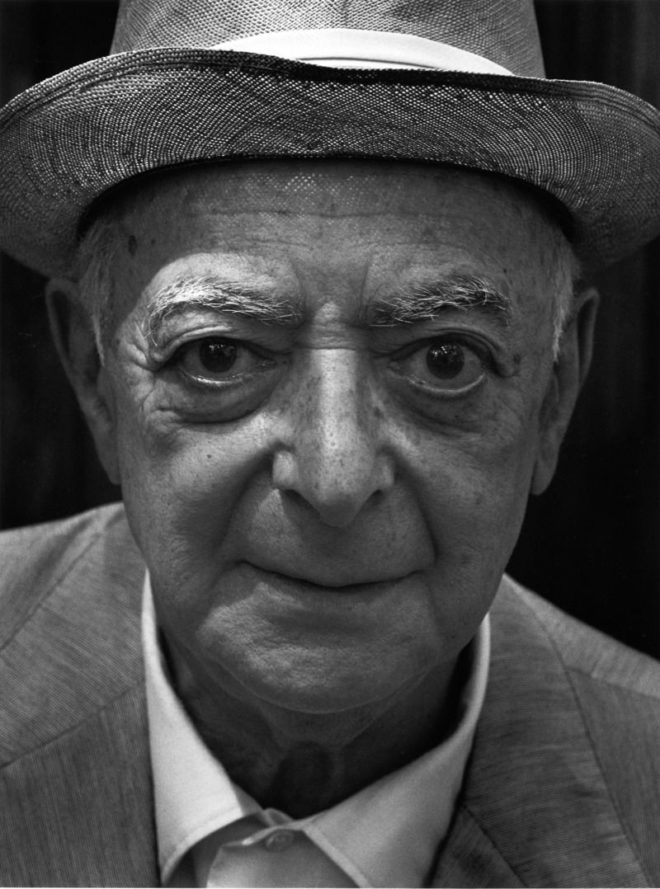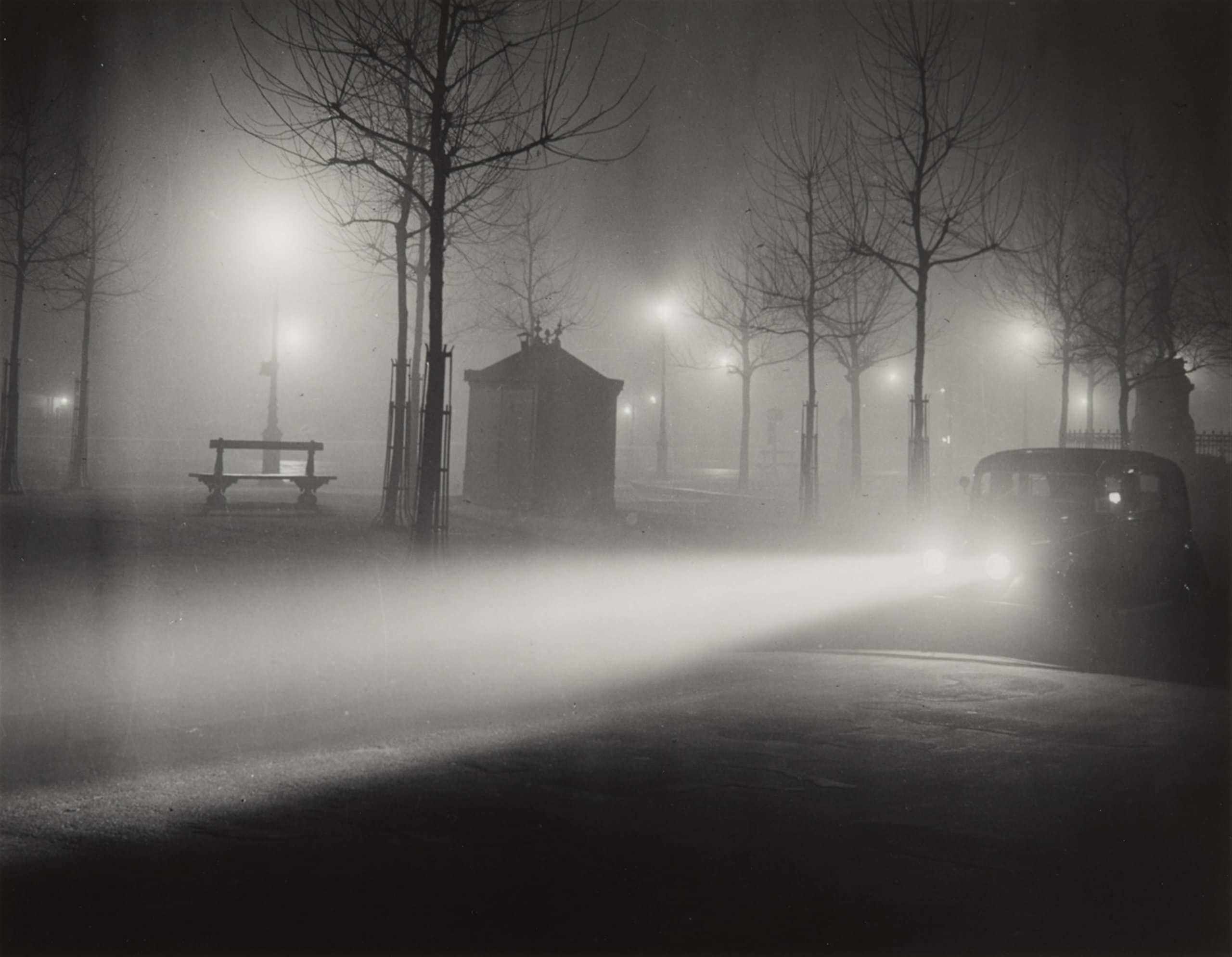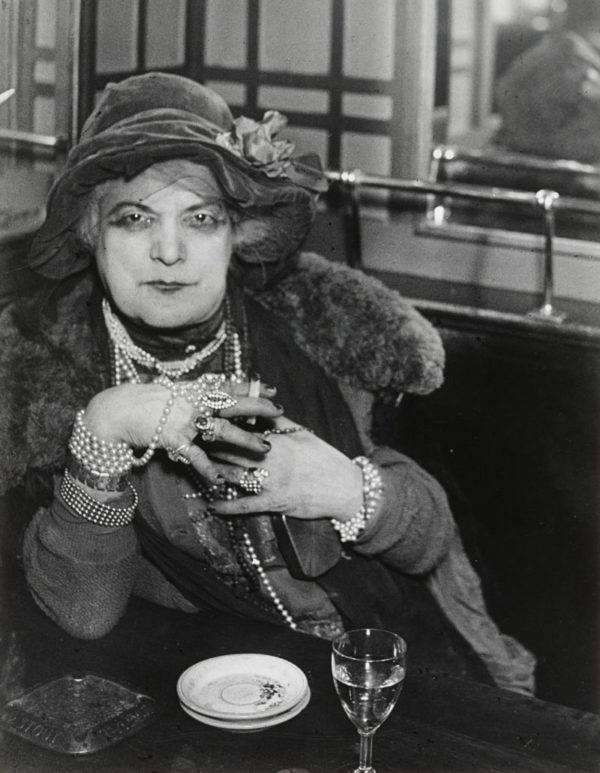Brassaï (Gyula Halász)
1899-1984
About
In truth, when you saw Brassaï, with his slightly bulging eyes constantly darting here and there, always on the lookout, you’d think that he didn’t need anything else to capture the richness and diversity of the world. His friend Henry Miller called him “a living eye.” It was the insatiable curiosity of that eye, and of the brain that is the extension of the retina, that made him the most complete artist and witness of his time.


Gyula Halász, now known as Brassaï, was born in 1899 at Brasso, in Transylvania, a part of Rumania that at the time belonged to Hungary. He adopted the name “Brassaï” after his hometown, in 1925. His father was a French Literature professor at the University of Brasso. At the age of five, Brassaï discovered Paris when his father took a one-year sabbatical. Brassaï began to see even then. In the Avenue du Bois, I would often watch the men and women riding horses, the sports teams, and the first automobiles. At the Champ de Mars, I saw Buffalo Bill and his gigantic circus with the cowboys, Indians, buffaloes, and Hungarian Csikos. At the Theatre du Chatelet, I was enthralled by a fantastic spectacle called “Tom Pitt,” and I was at the ceremony welcoming Alfonso XIII to Paris. Vivid, visual memories such as these would someday inspire the young boy to record and share his personal vision of the world through painting, writing, and later photography, and in 1917 he enrolled in classes at the Academy of Fine Arts in Budapest.
His dream to visit and perhaps live in Paris one day was destroyed with the First World War. Serving in the Austro-Hungarian army, he was moved to Berlin. And after 1918 the citizens of formerly hostile countries were not allowed in France. While in Berlin, he enrolled at the Akademische Hochschule, the Academy of Fine Arts at Berlin-Charlottenburg, and also worked in the free schools. Study of the arts such as painting, theatre, literature and music consumed Brassai. It was there that he also met and knew other artists such as Moholy-Nagy, Kandinsky, Kokoschka, Jean Pougny and Larionov. It was not until 1924 that Brassaï’s dream to live and work in Paris was realized.
The first job Brassai held in Paris was as a journalist. Some of the events he covered were the arrival of Queen of Rumania at a rugby match, French fashion shows, or even writing about the dog cemetery on an island in the middle of Seine. Brassai once said I worked as a journalist to earn a living; there is a positive side to having a talent for journalism: you have a curiosity about everything—you’re a good observer and can capture whatever is or seems to be interesting. Although he earned his living as a journalist, Brassai continued his other artistic talents such as painting, sculpting and drawing. Photography came into Brassai’s life when the Minotaure, an art review, was founded in the 1930s. He was asked to photograph the studios of certain artists. During his work with the Minotaure, Brassai met surrealists Salvador Dali and Paul Eluard. In addition, his work at the art review included photographs of nudes and busts, which resembled his drawing, painting and sculpting. Brassai also had the experience of knowing and befriending Pablo Picasso during his time in Paris. Their first experience together was when Picasso drove Brassai, in his Hispano-Suiza, to Boisgeloup to photograph his sculptures. The next day, the painter invited him to come with him and his family to the Medrano circus. Conversations avec Picasso was written by Brassai as a result of their close friendship. Picasso, not historically known for reading books about himself once said, if you really want to know me, read this book.
By now Brassai’s name and work was becoming so well known and respected he was sought by almost all. Harper’s Bazaar asked Brassai to photograph Carmel Snow and Alexey Brodovitch, along with Bonnard, Braque, Giacometti, and Le Corbusier. He was also sent to Greece, Turkey, Morocco, the Arctic, Sicily, Brazil, the United States, England and Ireland. He photographed the pimps at the Bastille, graffiti and Paris at night. He thus made us sensitive to the truth not only of human beings, but also of things, and even materials. Not only does Brassai help us to better understand living beings and inert matter he also seems to have penetrated the secret of light and night.
Light and night, Brassai was able to capture the essence of what he saw in such a way that all of those who view his images were, and continue to be able, to see as he did. Inspired by Andre Kertesz who took photographs of the Seine at night using a half-hour exposure, Brassai bought a Voigtlander 6.5 x 9cm camera with a Heliar f/4.5 lens. His main technical problem with the night imaging was the light given off by street lamps. Lights photographed at night developed into chalky whites, too stark against the black of the night. Some emulsions had been developed to counteract the halation, but Brassai did not feel they were recreating his vision. He learned to avoid halos by using elements of the “set”—walls, trees, bridges—to mask the street lights, converting direct into indirect lighting whenever possible. Photographing in hazy, rainy weather proved best, providing the atmosphere that would absorb or reflect light and attenuate excessive contrasts. Brassai would venture into the most deserted areas of the streets. To gauge my shutter time, I would smoke cigarettes—a Gauloise for a certain light, a Boyard if it was darker. The policemen on patrol wondered what kind of crime I was in the midst of committing. They had never seen anyone taking pictures at night and for good reason. To clear myself, I always had some prints with me to show them. I have noticed that policemen are very interested in photography. So they immediately became friendlier. Moody, expressionistic photographs are the result of Brassai’s work at night. In addition to street photography, Brassai captured stark, revealing images of the people of the night. The now famed book, Paris de nuit (Paris by Night) was published in 1933 with text by Paul Morand and photographs by Brassai. Other books followed such as Henry Miller grandeur nature (Henry Miller Life-Size), Henry Miller rocher heureux (Henry Miller, the Happy Rock), Le Paris secret des annees 30 and Les Artistes de ma vie (The Secret Paris of the Thirties, Artists in my Life). The Solo and Group Exhibitions in which Brassai participated are numerous. The Museum of Modern Art has exhibited his work extensively, including the famous exhibit The Family of Man. He received the gold medal at the Photography Biennial in Venice in 1957, and in 1966 he was awarded the American Society of Photographers Magazine prize. He received the medal of the city in Arles and the first national Grand Prize for Photography in Paris. He inspired future artists such as Diane Arbus who said Brassai taught me something about obscurity, because for years I had been hipped on clarity. Lately, it’s been striking me how I really love what I can’t see in a photograph. In Brassai, in Bill Brandt, there is the element of actual physical darkness, and it’s very thrilling to see darkness again.
The provocative nature of Brassai’s images made Brassai the artist and the photographer that he was. His images have the timelessness needed to continue to captivate contemporary audiences.
On July 7, 1984 Brassai died in Nice. He was buried in the Montparnasse Cemetery. Brassai was inducted into the International Photography Hall of Fame and Museum in 1979.
By Lori Oden For IPHF

